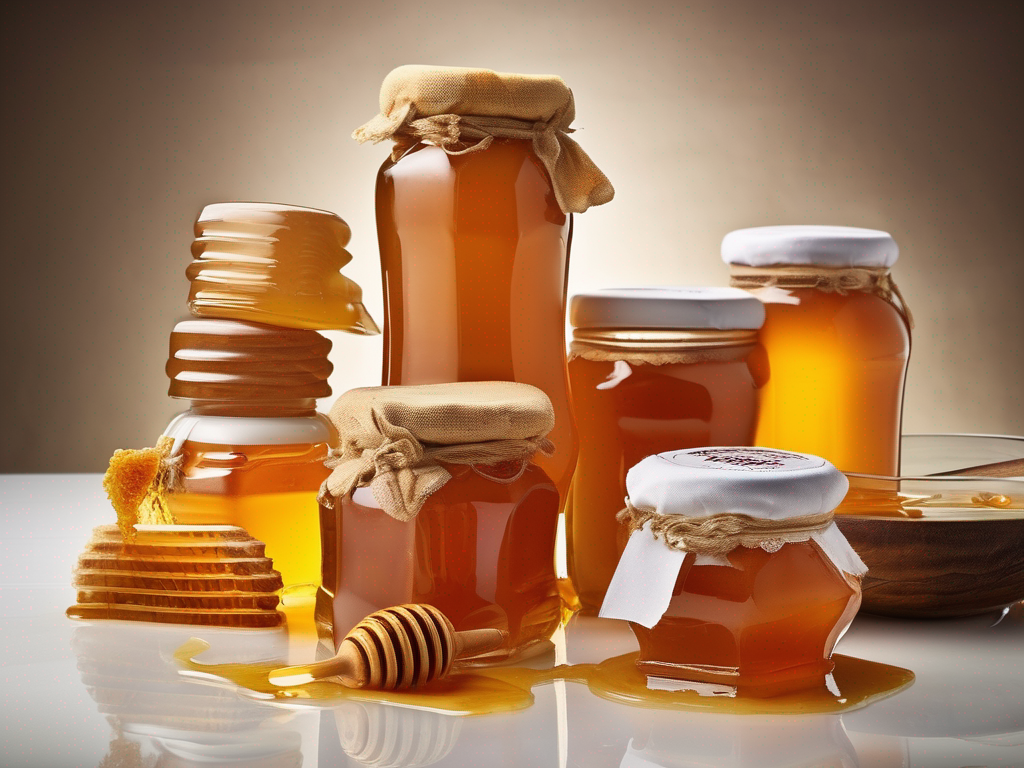
Proper Storage of Honey Dijon Salad Dressing: Unrefrigerated, Unopened
Get Your Free Food Safety Cheat Sheet
30 most common foods with instant answers. Print it and stick it on your fridge—completely free!
Proper Storage of Honey Dijon Salad Dressing: Unrefrigerated, Unopened
When it comes to storing commercially bottled Honey Dijon salad dressing that is sold unrefrigerated and unopened, it's essential to follow proper guidelines to ensure food safety and maintain product quality. In this post, we will discuss the best practices for storing this type of salad dressing to prevent spoilage and contamination. (Honey)
Understanding Honey Dijon Salad Dressing
Before diving into storage tips, let's first understand the key components of Honey Dijon salad dressing. This type of dressing typically contains a mixture of ingredients such as honey, Dijon mustard, vinegar, oil, and various seasonings. The combination of sweet and tangy flavors makes it a popular choice for salads, marinades, and dips.
Key Ingredients in Honey Dijon Salad Dressing:
- Honey
- Dijon Mustard
- Vinegar
- Oil
- Seasonings
Proper Storage Guidelines
Follow these guidelines to ensure that your unrefrigerated, unopened Honey Dijon salad dressing remains safe to consume and maintains its flavor profile:
1. Store in a Cool, Dark Place:
- Keep the unopened bottle of dressing in a cool, dark place away from direct sunlight and heat sources. Exposure to light and heat can degrade the quality of the ingredients over time.
2. Check the Expiry Date:
- Before purchasing the salad dressing, check the expiry date on the bottle. Ensure that you select a product with a reasonable shelf life to maximize freshness.
3. Avoid Temperature Fluctuations:
- Fluctuations in temperature can impact the quality of the dressing. Avoid storing the bottle in areas where temperatures fluctuate significantly, such as near stoves or refrigerators.
4. Seal the Bottle Properly:
- Make sure that the bottle is tightly sealed to prevent air from entering and causing oxidation. Proper sealing also helps maintain the integrity of the ingredients.
5. Avoid Cross-Contamination:
- Store the salad dressing away from raw meat, poultry, seafood, or other potentially hazardous foods to prevent cross-contamination. Keep the bottle on a separate shelf or in a designated storage area.
Safety Tips
In addition to proper storage practices, here are some safety tips to keep in mind when handling Honey Dijon salad dressing:
1. Inspect the Bottle:
- Before using the dressing, inspect the bottle for any signs of damage, leaks, or mold. If you notice any issues, discard the product immediately.
2. Shake Before Use:
- Due to the natural separation of ingredients in salad dressings, it's recommended to shake the bottle well before each use to ensure proper mixing of flavors.
3. Refrigerate After Opening:
- Once you open the bottle of salad dressing, store it in the refrigerator to maintain freshness and extend its shelf life. Check the label for specific refrigeration instructions.
4. Use Clean Utensils:
- When serving the dressing, use clean utensils to avoid introducing contaminants into the bottle. This helps prevent bacterial growth and maintain food safety.
Conclusion
Proper storage of commercially bottled Honey Dijon salad dressing that is sold unrefrigerated and unopened is crucial for maintaining quality and safety. By following the guidelines outlined in this post, you can enjoy delicious salads and dishes without compromising on flavor or risking foodborne illnesses. Remember to check the expiry date, store the dressing in a cool place, and follow safety tips when handling the product. With these practices in place, you can savor the unique taste of Honey Dijon salad dressing with peace of mind. (Honey)
Authoritative Food Safety References
These agencies and university labs inform every tip and health precaution we publish.
USDA FoodKeeper – Cold Storage Guidelines
Official refrigerator, freezer, and pantry timelines maintained by the U.S. Department of Agriculture.
Visit USDA FoodKeeperFDA Produce Safety Rule & Grower Guidance
Field-to-fridge handling practices that prevent contamination of fruits, vegetables, and leafy greens.
Visit FDA Produce SafetyCDC Foodborne Illness Prevention Hub
Surveillance-backed guidance on pathogens, symptoms, and steps to reduce foodborne illness risk.
Visit CDC Food SafetyUC Davis Postharvest Technology Center
University research detailing optimal storage atmospheres for produce after harvest.
Visit UC Davis PostharvestPenn State Extension – Home Food Preservation & Safety
Peer-reviewed extension bulletins on safe canning, chilling, and reheating practices.
Visit Penn State ExtensionGet Your Free Food Safety Cheat Sheet
30 most common foods with instant answers. Print it and stick it on your fridge—completely free! Want more? Upgrade to the complete guide with 70+ foods.
Scan your food directly and get instant safety info using our AI-powered camera feature.